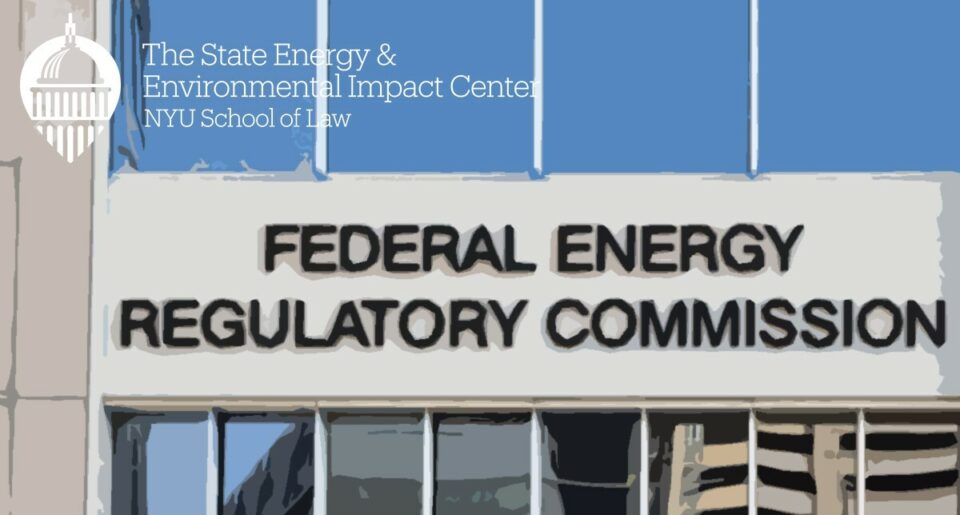Musical Chairs at FERC
Jessica Bell (Energy Director & Deputy Director) / November 6, 2020

Late on November 5, President Trump named James Danly as Chairman of the Federal Energy Regulatory Commission (FERC), the federal agency responsible for crucial energy issues such as wholesale electricity markets and interstate natural gas pipelines. Here is a quick set of questions and answers about what this shake up means at this once-lesser-known federal agency.
Who are the FERC commissioners?
FERC is a five-member commission with no more than three from any one political party. Commissioners are appointed by the president with the advice and consent of the Senate. A quorum (3 commissioners) is required for FERC to take action. The president appoints the chairman, who still only has one vote, but does have a bigger role as an agenda-setter. Each commissioner serves a five-year term that runs from the end of their predecessor’s term, not from when they are confirmed.
FERC has seen an increasing level of politicization. For example, in 2017, then-Energy Secretary Rick Perry proposed that FERC provide assistance to failing coal plants. (FERC declined.) There also have been party-line splits regarding whether and how FERC should address climate change issues, and on FERC’s role with regard to state clean energy policies
Currently, there are three commissioners, two Republicans and one Democrat. Chairman Danly is the newest member, confirmed in March 2020 and serving a term that ends June 30, 2023. Commissioner Chatterjee, who had been Chairman, was confirmed in August 2017, and his term ends June 30, 2021 (he has stated he intends to serve the remainder of his term). Commissioner Richard Glick, the lone Democrat, was confirmed in November 2017, and his term expires June 30, 2022.
Over the summer, the White House nominated Allison Clements (D) and Mark Christie (R) to fill the two vacancies on the Commission. The Senate held a committee hearing, but there has not been further progress on their nominations.
Why the change?
There has been some speculation about why the Trump administration decided to trade one Republican for another right now. Chatterjee has cultivated himself to be a markets purist, using this ideology to issue decisions detrimental to state clean energy policies, but, to his credit, also pursuing opportunities to increase competition from clean energy resources in wholesale electricity markets on FERC’s terms. He recently convened a technical conference to consider carbon pricing in organized wholesale markets, and FERC issued a proposed policy statement on the same topic shortly thereafter (currently open for comment). And last week, Chatterjee announced that he would be convening a roundtable discussion on electric vehicles.
Danly, on the other hand, was a critical voice at the carbon pricing technical conference (the part that he attended, that is) and dissented in part from the issuance of the proposed policy statement. He also dissented from FERC’s recent Order 2222 that aims to remove barriers to the participation for distributed energy resource aggregators in wholesale electricity markets. And over the summer, he expressed concern with the regulatory treatment of these sorts of resources when the Commission denied a petition asking it to assert jurisdiction over net metering.
While Chatterjee and Danly will continue to each exercise their respective votes on FERC matters, Danly, as Chairman, will have significant control over what the Commissioners take up. The proposed carbon pricing policy statement, for example, seems unlikely to go forward with Danly at the helm.
How does an administration change impact FERC?
An incoming administration can name a new Chairman immediately. When President Trump was sworn in, he named then-Commissioner Cheryl LaFleur to be acting Chairman, replacing then-Chairman Norman Bay. Bay resigned from FERC at that point, and FERC did not have a quorum until August 2017 when President Trump’s first nominees were confirmed (Chatterjee and Rob Powelson, followed by Kevin McIntyre – all Republicans).
If the Senate does not act on the nominations of Clements and Christie, they (or alternative candidates) would need to be renominated and then be subject to hearings and a vote. In the meantime, FERC will continue to operate with Glick, Chatterjee, and Danly. If the current vacancies are filled by one Democrat and one Republican, then there will not be the opportunity for a Democratic majority until Chatterjee’s term ends and a new Democratic Commissioner is appointed and confirmed.
What happens if FERC does not have a quorum?
If FERC does not have three commissioners to consider a case – either because there are more than two vacancies or because of recusals of sitting commissioners – then it is unable to act. That means it cannot grant certificates to new natural gas pipelines, it cannot act on rehearing of an order it already decided, it cannot grant or deny a complaint, and it cannot issue a rule. However, there are some utility filings that go into effect by operation of law under Section 205 of the Federal Power Act sixty days after being filed, unless FERC otherwise orders. For that reason, a lack of a quorum raises concerns about ensuring that all changes utilities make to their rates and services remain just and reasonable.
What comes next?
Advocates should keep an eye on FERC to see where Danly’s priorities take the agency. There is unlikely to be enough time to develop, take comment on, and finalize a new rulemaking. But the agency has a number of outstanding items that Danly could push forward. Danly will preside over his first open meeting on November 19, with an agenda released a week in advance. This opportunity to hear from Danly may be an indication of whether his stint as chair will rock the boat by, for example, revisiting a coal bailout, or simply serve as a course-correction to Chatterjee’s perceived climate agenda.
This page was updated on February 12, 2024 to better meet our accessibility standards. To see the page as it was initially published, click here.
